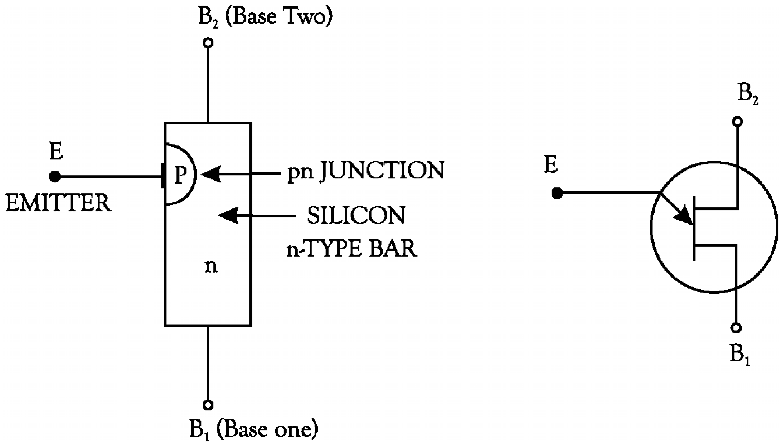
Unijunction Transistor (UJT)
A Unijunction Transistor (UJT) is an electronic semiconductor device that has only one junction. It has three terminals an emitter (E) and two bases (B1 and B2). The base is formed by lightly doped n-type bar of silicon. Two ohmic contacts B1 and B2 are attached at its ends. The emitter is of p-type and it is heavily doped. The resistance between B1 and B2, when the emitter is open circuit is called inter base resistance. The original UJT, is a simple device that is essentially a bar of N type semiconductor material into which P type material has been diffused somewhere along its length.

The UJT is biased with a positive voltage between the two bases. This causes a potential drop along the length of the device. When the emitter voltage is driven approximately one diode voltage above the voltage at the point where the P diffusion (emitter) is, current will begin to flow from the emitter into the base region. Because the base region is very lightly doped, the additional current (actually charges in the base region) causes (conductivity modulation) which reduces the resistance of the portion of the base between the emitter junction and the B2 terminal. This reduction in resistance means that the emitter junction is more forward biased, and so even more current is injected. Overall, the effect is a negative resistance at the emitter terminal. This is what makes the UJT useful, especially in simple oscillator circuits. When the emitter voltage reaches Vp, the current starts to increase and the emitter voltage starts to decrease. This is represented by negative slope of the characteristics which is referred to as the negative resistance region, beyond the valley point , VEB proportional to IE.



